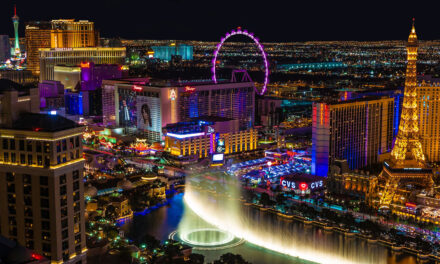Fontana’s journey from a rural community to a dynamic city encapsulates the essence of progress and adaptation characteristic of the Southern California region.
Its history offers a window into the transformational power of vision and enterprise.
Laying the Agricultural Foundation
Fontana’s story began on the sprawling, fertile lands of early 20th-century Southern California.
These verdant expanses beckoned to farmers, promising a new frontier for agriculture. Orchards and ranches thrived, painting the landscape with the hues of citrus and grapevines, embodying the region’s agricultural spirit.
A.B. Miller’s Dream Realized
A pivotal force in Fontana’s history, A.B. Miller, through the Fontana Farms Company, pioneered a revolution in community and agricultural development.
His comprehensive vision for a thriving, self-sufficient community planted the seeds for Fontana’s metamorphosis from pastoral landscapes to a hub of agricultural innovation.
War-Time Industrialization
The onset of World War II marked a turning point as the Kaiser Steel Mill rose from Fontana’s heartland.
This industrial giant became the cornerstone of the city’s economy, drawing in a wave of workers and setting the stage for a period of remarkable growth and prosperity.
Post-War Expansion: A City Reimagined
In the wake of World War II, Fontana rode the crest of economic prosperity into an era of expansion.
The city, synonymous with opportunity, lured a burgeoning population into its embrace, laying the foundation for its suburban identity and future growth.
A Thriving Contemporary Cityscape
Fontana’s present-day status as a vibrant metropolis is a testament to its strategic evolution.
Its growth has been carefully managed, balancing industrial might with community development, to cement its position as a pivotal city in Southern California.
Q&A: Glimpses into Fontana’s Historic and Modern Identity
Q: How did Fontana’s agricultural sector adapt to the city’s industrial transformation?
A: Fontana’s agricultural sector responded to industrialization by scaling up operations, embracing technology, and diversifying into other areas such as logistics and service industries.
Q: What impact did the influx of Kaiser Steel Mill workers have on Fontana’s cultural fabric?
A: The influx of workers introduced a rich cultural diversity to Fontana, shaping its community dynamics and fostering a melting pot of traditions and customs.
Q: Beyond steel, what other industries have shaped Fontana’s economic landscape?
A: Beyond steel, Fontana has cultivated a diverse economic landscape featuring logistics, manufacturing, retail, and a burgeoning high-tech sector.
Q: How has Fontana preserved its community ethos amidst rapid growth?
A: Fontana has preserved its community ethos by investing in education, public safety, and recreational amenities, ensuring a balanced and quality lifestyle for its residents.
Q: In what ways does Fontana serve as a microcosm of Southern California’s economic trends?
A: Fontana mirrors Southern California’s economic trends with its robust industrial base, embrace of technology, and role as a logistics hub, reflecting broader regional economic patterns.
Q: What strategies are in place to ensure Fontana’s sustainable future amidst its urban and economic development?
A: Fontana employs strategies such as environmental conservation, infrastructure improvement, and strategic urban planning to ensure a sustainable and resilient future.
Fontana’s Pathway to Tomorrow
Fontana’s narrative is rich with themes of transformation, resilience, and strategic foresight.
The city has successfully navigated the transition from its agricultural origins to become an emblem of industrial prowess and community vitality. Looking to the future, Fontana draws from its diverse history to inform its path forward, balancing growth with sustainability.
With each new development, Fontana honors its past while carving out a progressive and inclusive future, promising a city that remains vibrant and prosperous for the next generations.
What innovations and developments will define Fontana’s next era, and how will its citizens contribute to the unfolding story of this dynamic city?





